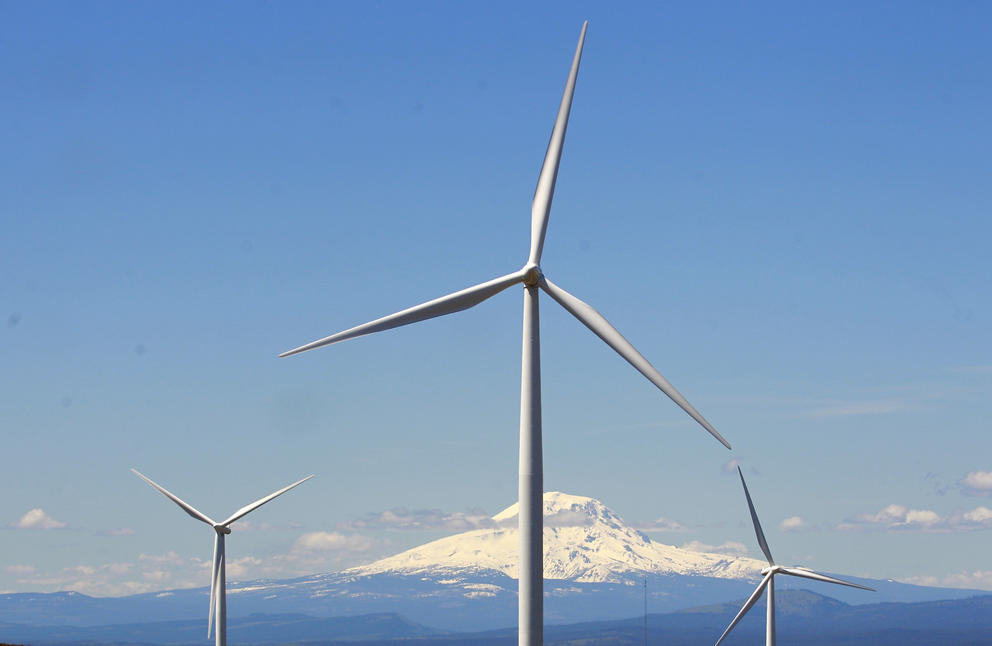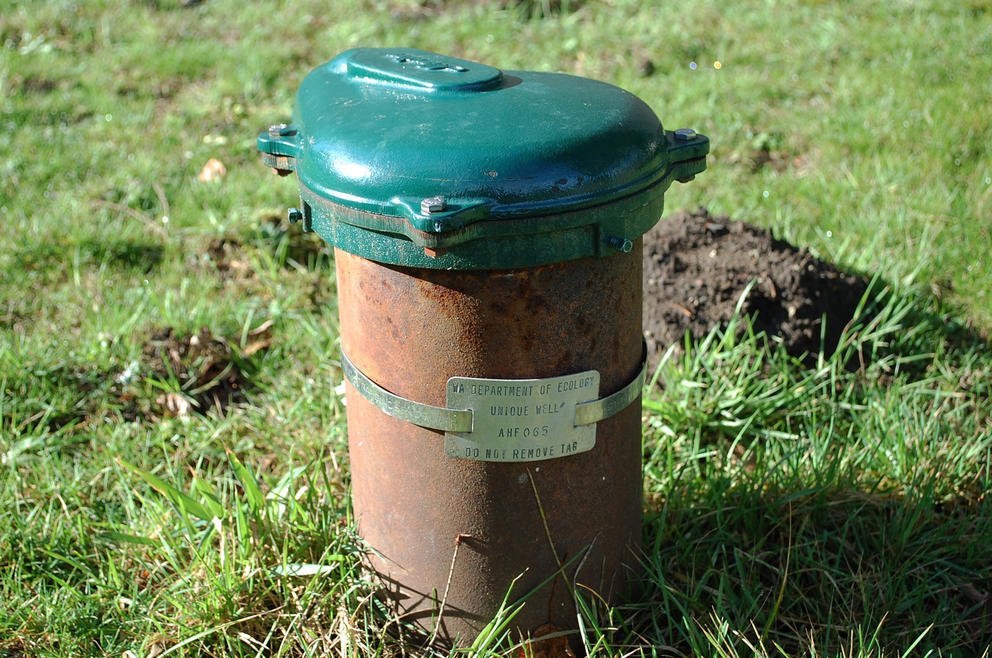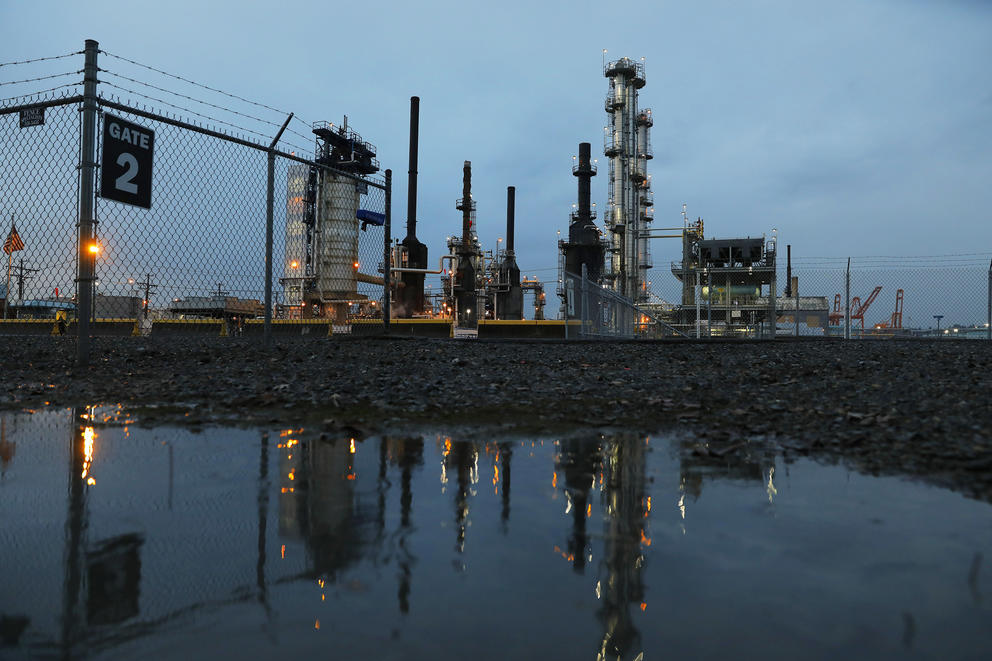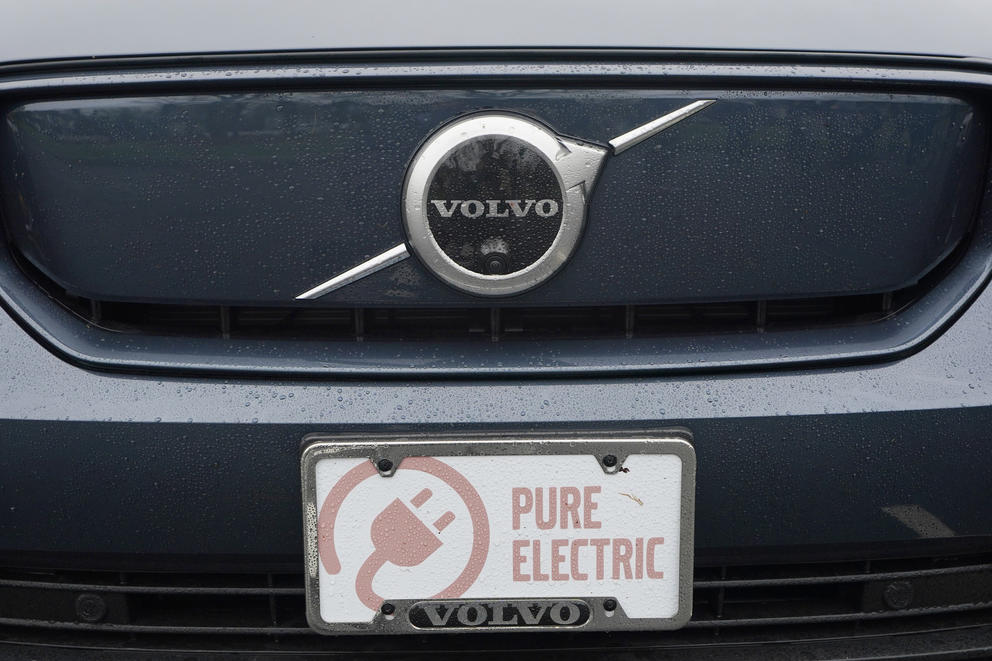Washington state opens bids for building new hybrid ferries

The Walla Walla ferry and the Kitsap fast ferry pass each other in Elliott Bay, Feb. 13, 2024. (Genna Martin/Cascade PBS)
Washington State Ferries is inviting companies to express interest in building five new hybrid diesel/electric ferries.
The bid process, announced Monday, is the latest step toward getting two new ferries running in Puget Sound by 2028, two more by 2029 and a fifth by 2030, said Steve Nevey, the Washington Department of Transportation’s assistant secretary for the ferry system.
Some politicians, including the Republican candidates for governor, have called for replacing the first two hybrid ferries with diesel-only vessels, predicting that diesel ferries can be finished quicker. But state officials say at this point, hybrid ferries can be built faster.
“This hybrid electric design is the quickest path,” Nevey said.
Sources for the diesel engines and for some electrical systems that were used for the previous round of new ferries in 2014-2018 have gone out of business, so switching back to diesel ferries would require finding new manufacturers and doing new design work. “We’d have to start all over again,” said Rep. Jake Fey, D-Tacoma, the Washington House’s transportation leader.
“Ship design is a lengthy and complex process,” Nevey added.
The invitation for bids will gauge potential interest in building the hybrid ferries. The state expects at least 10 bidders nationwide to study whether they want to bid on Washington contracts. The WSF aims to have one or two shipbuilding companies contracted in 2025 to build the five hybrid ferries.
The ferry system is struggling to keep 10 routes that criss-cross Puget Sound fully functional. The system requires 19 vessels during its peak usage period and 17 during the off-season. With some ferries being maintained or under repair, the fleet usually has 16 to 18 vessels in service at a time. WSF aims to expand that to 21 to 26 vessels by 2040, 22 of which would be hybrid diesel/electric, to reduce the fleet’s carbon footprint by 76%.
After contracts are awarded in 2025, the ferry system expects the design work to take one year and construction to take two years.
The ferry system is seeking to replace its second-largest vessel — capacity 144 vehicles — with a model capable of handling 164 standard cars. The hybrid vessel — capable of a top speed of 17 knots — would be faster, lighter and more fuel-efficient than its predecessor, he added.







